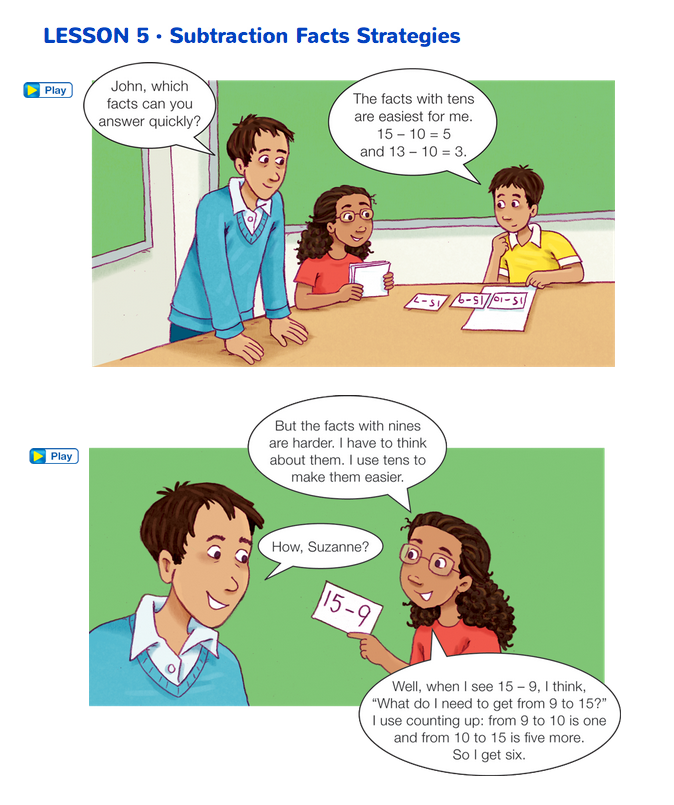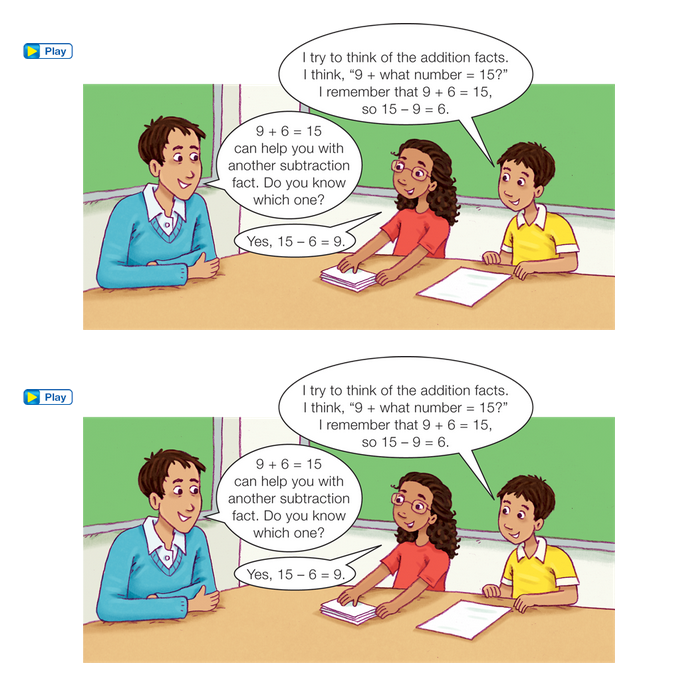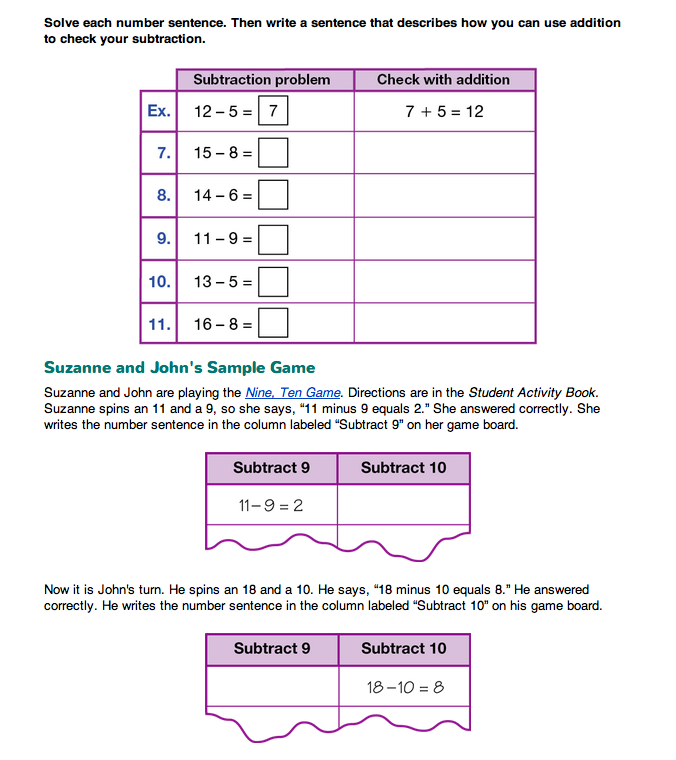Subtraction Facts Strategies
Est. Class Sessions: 2–3Developing the Lesson
Part 1. Subtraction Facts Strategies
Using Tens. The Subtraction Facts Strategies pages in the Student Guide begin with a discussion between John, Suzanne, and their teacher about three subtraction facts: 15 − 10, 13 − 10, and 15 − 9. Through their discussion, students review subtraction facts strategies.
After students read the two pages of dialog, ask questions like the following:
After listing a few facts with tens on the board, ask:
Refer to Suzanne's explanation to introduce “facts with nines.” Ask the class to generate a list of problems similar to 15 − 9, such as 13 − 9 or 17 − 9.
Ask:
Discuss Subtraction Strategies. Class discussion of strategies helps students verbalize number relationships and encourages them to think about the problems in new ways. In the class discussion between John, Suzanne, and the teacher, John uses addition to help him solve 15 – 9. This strategy can help students identify fact families relating addition to subtraction.
It is important to emphasize that a strategy that works well for one person may not be helpful to another. The strategies mentioned here are suggestions students may find useful. Encourage students to develop and share their own strategies as well. Sharing strategies increases the opportunities for students to encounter helpful strategies that will make learning the subtraction facts easier. Students who already demonstrate fluency with the facts may find that using a strategy is more work. Emphasize that these strategies will be more helpful when they solve problems such as 25 − 9 or 33 − 19.
Ask student pairs to discuss Questions 1–6 in the Student Guide. It is not necessary for students to remember the names of the strategies, but they should remember how to use them. Students may use different strategies to do the same problem. Pairs can report their answers and methods in a class discussion.
Ask:
Thinking Addition. After discussing the strategies, remind students that addition can also be used to check the facts that they think they “just know.” Ask them to read the Thinking Addition section in the Student Guide and then solve Questions 7–11. In these problems, students write an addition sentence that they can use to check each subtraction problem. Encourage them to always check subtraction problems with addition. Usually they should do this using mental math instead of writing out full sentences, though this strategy helps develop this habit.















